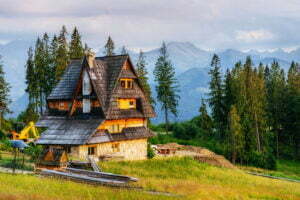Stone aggregate is an essential material in industrial applications. It is used in the production of concrete and asphalt, as well as in construction projects like roads and railways. The material is also used in the production of glass, ceramics, and even in the pharmaceutical industry. Keep reading to learn more about how stone aggregate is used in industrial applications.
What is stone aggregate?
Stone aggregate is a material that is composed of small pieces of stone. Industrial stone aggregates are used in a variety of ways in industrial applications. One everyday use is as a base for roads and highways. The stones are laid down in a layer and then packed together to create a solid surface for driving or walking. Another use for stone aggregate is agriculture. One use of stone aggregate in agriculture is as a soil amendment.
Soil amendment is any material added to soil to improve its quality. This might be in terms of its ability to support plant growth, retain water and nutrients, or inhibit soil erosion. Stone aggregate helps the soil’s structure and fertility when added to the soil. Stone aggregate can also be used as a mulch to help protect the soil from erosion and to keep it moist. Additionally, stone aggregate can be used as a base for roads and other structures in agricultural areas.
What are the types of stone aggregate?
Aggregates are an essential ingredient of concrete, asphalt, and mortar. The most common type of aggregate is crushed stone, created by breaking larger rocks into smaller pieces. Crushed stone is used in various applications, including concrete, mortar, asphalt, pavement, foundations, and walls. Other types of aggregates include sand, gravel, and slag. Each type of aggregate has unique characteristics that make it suitable for different applications.
The physical and mechanical properties of aggregates are essential for their proper use. The most important properties include durability, abrasion resistance, soundness, cohesion, and texture. The type of stone aggregate used is based on the specific needs of the application. Some factors need to be considered when choosing the right type of stone aggregate. These factors include the weight of the material, the size and shape of the particles, the acidity or alkalinity of the material, the ability to withstand weathering and erosion, the material’s color, and the cost.
How is stone aggregate used in construction and landscaping?
Stone aggregate, also known as crushed stone, gravel, or aggregate, can be used in various construction methods. In the construction of buildings and other structures, aggregate can be used as a filler material to help reduce the amount of needed concrete. This can help to save on construction costs. The aggregate can also help improve the structure’s strength and durability. Aggregate can also be used to improve drainage.
When used in combination with a drainage system, aggregate can help to prevent flooding and to keep the area around the structure dry. Stone aggregate is a common landscaping material because it is durable, affordable, and available in various colors and textures. Stone aggregate is a versatile material used for multiple purposes in your garden. One common use is to create pathways. A few things to consider when making a garden pathway with stone aggregate. First, a professional must figure out the correct type and quantity of stone aggregate to use.
The stone aggregate type will depend on the pathway’s function and location. For example, a pathway that leads to a garden gate may require a different kind of aggregate than one that leads to a patio. After choosing the right stone aggregate type, the professional must measure the pathway’s length and width. This will help them determine how much aggregate is needed. Once they have the measurements, they can start laying down the stones in a staggered pattern.
The aggregate can also be used to create flowerbeds and other features in your garden. Using stone aggregate, you can create a beautiful and functional garden that will last for years.










